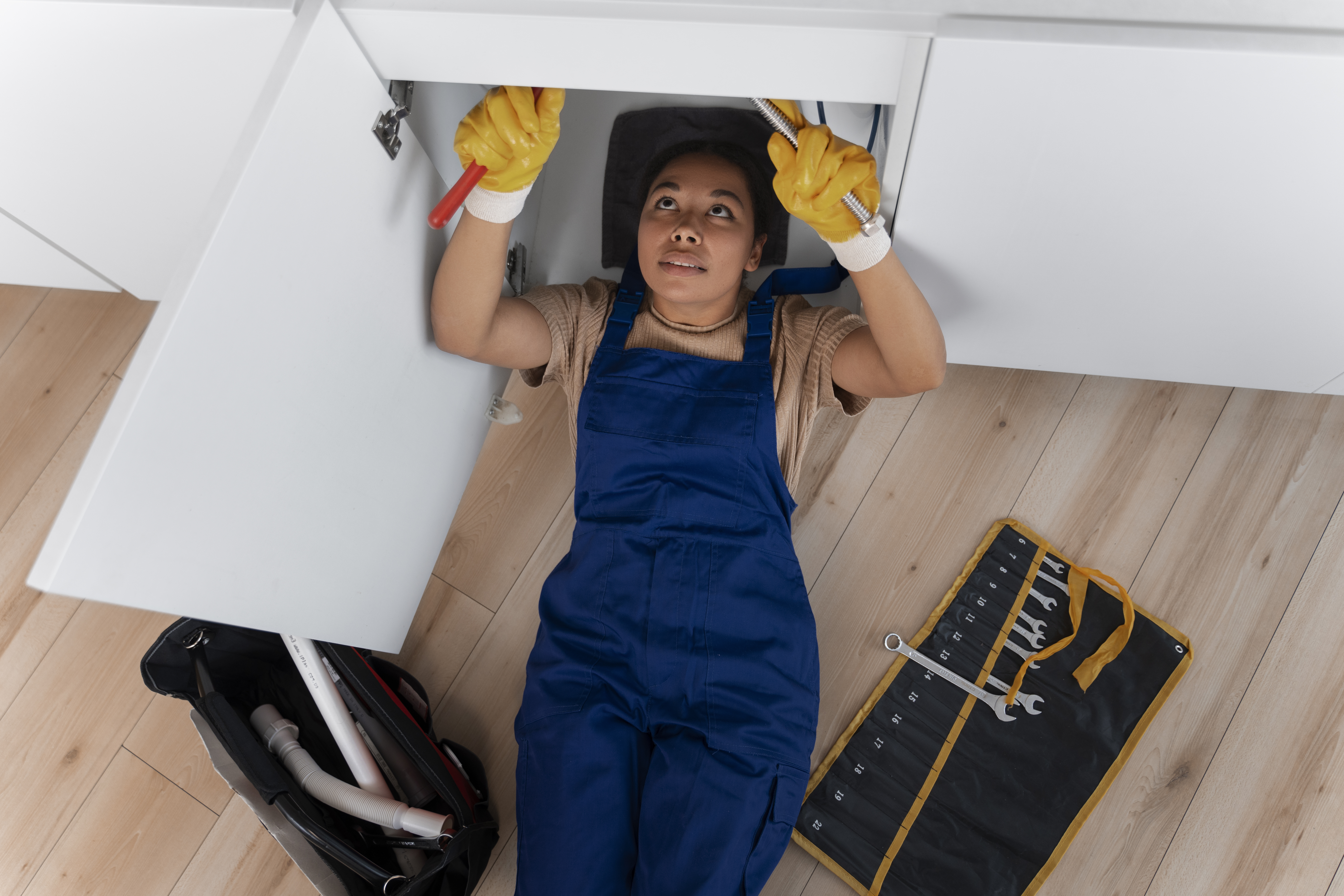Most homeowners consider plumbing problems as nothing more than an occasional clogged drain or a dripping faucet. Rarely do they consider the warning signs that point to more severe issues within their home’s plumbing system. These problems can quickly escalate into expensive repairs and damage if left unchecked. Here are 10 subtle yet critical signs that your house’s plumbing may be on the brink of a breakdown.
(1) Unexplained Increase in Water Bills
A sudden surge in water bills is often one of the first red flags pointing to a plumbing issue in your house. This increase can be indicative of various problems, such as leaks that go unnoticed because they are hidden within walls or under the foundation. Running toilets, often ignored, can also contribute significantly to water wastage and higher bills.
To stay vigilant, it’s advisable to routinely compare current bills with those from previous months or the same period in past years. This comparison can help spotlight any irregularities in water consumption. Homeowners should also make a habit of monitoring their water meter and usage patterns to catch discrepancies early and address potential leaks or plumbing down scenarios before they escalate.
(2) Discoloration of Water
Identifying signs of rust or sediment in water as an indicator of bad water pipes can be a silent alarm for plumbing problems. If water from faucets appears brownish, reddish, or yellow, this could signal corrosion within your pipes or the presence of minerals, indicating a need for inspection or replacement.
Understanding the health implications of using contaminated water is crucial. Rust in water may indicate the presence of harmful bacteria or heavy metals that can pose health risks. Homeowners should take immediate action to ensure the safety of their household.
Steps to take if water discoloration is noticed should include ceasing the use of the discolored water for consumption or cooking and contacting a plumbing professional to assess the situation. A plumber can determine the source of the discoloration, whether it’s from the house plumbing or external sources, and suggest appropriate solutions to resolve the issue.
(3) Mysterious Puddles or Wet Spots
Mysterious puddles or unexplained wet spots in your home should never be ignored as they often indicate a hidden leak within your plumbing system. If you find moisture on floors or walls where no spillage has occurred, it’s essential to investigate further. Whether the moisture is in a closet, basement, or ceiling cavity; noticing it early can help prevent more extensive damage to walls and floors.
Moisture accumulation could result from various common plumbing issues such as leaky pipes, overflowing toilets, broken seals on tubs, and sink drains. In cases where no obvious causal link between the dampness observed within your house’s systems exists – for instance, under dry conditions – these anomalous wet spots should be taken seriously.
It’s important to trace the source of the moisture if you can: start with the most obvious locations such as under sinks, around toilets, and near appliances like washing machines and dishwashers. In cases where the leak is not visible, it might be necessary to consider the possibility of a broken pipe within the walls or beneath the flooring, which often requires professional expertise to diagnose and repair.
(4) Reduced Water Pressure
Reduced water pressure can be a telltale sign of a compromised plumbing system. Homeowners might notice that the water from their faucets or shower heads is no longer flowing with the same force as before.
Low water pressure may result from various factors. In some cases, mineral deposits build up inside pipes, constricting water flow, while in others, situations could arise from a significant leak or a breach in the main water line. Homeowners should consider professional evaluation to determine the exact cause and restore proper function to their plumbing systems.
(5) Strange Noises in the Plumbing System
Identifying noises such as banging, gurgling, or whistling within the plumbing system can be a telltale sign of underlying issues. These sounds can emerge from pipes, toilets, or faucets and often indicate anomalies in water flow or pressure. Banging, also known as water hammer, occurs when water quickly stops or changes direction, causing pipes to knock against walls or other pipes. Gurgling might point to a blockage in the drain, preventing air from flowing freely in the pipes. Whistling usually happens when water flows past a constriction or a partially closed valve, which could mean a faulty component needs attention.
What these sounds may imply about the health of your plumbing should not be dismissed. They can be symptomatic of various concerns ranging from loose pipe fixtures to more serious blockages or pressure buildups that could lead to pipe bursts or leaks. Noting when and where you hear these noises can be crucial for a professional to diagnose the problem accurately. It is advisable to seek expert evaluation if such sounds persist, as addressing them early can prevent more extensive damage to your house’s plumbing system.
(6) Persistent Clogs or Slow Drains
Persistent clogs or slow drains are more than just minor inconveniences; they can be harbingers of deeper plumbing issues. Occasional clogs might simply result from normal use and can often be cleared with a plunger or a drain cleaner. However, clogs that persist despite repeated efforts to clear them could be a sign of more severe issues.
Slow drains or persistent blockages might point to dirty pipes due to years of buildup. Grease and debris collecting on pipe walls can constrict the flow over time until it eventually becomes blocked entirely. Leaking sewer lines are also culprits for continually obstructed fixtures as they allow tree roots or dirt into the line, creating serious plumbing problems.
Consistent issues with draining could point to obstructions in the main sewer line, buildup of grease or foreign objects, or even tree root intrusion. In each case, professional evaluation and prompt attention are crucial to addressing the issue before it develops into more extensive repairs.
(7) Foul Smells Emanating from Drains
Sewer-like odors in the home are a clear sign that something isn’t right with the plumbing. Toilets and drains may emit these odors if P-traps are not functioning correctly. When water traps designed to keep sewer gasses from entering the home dry out or malfunction, they can allow foul smells to permeate the living space. It’s also possible that a clog or blockage in the vent pipes is preventing these gasses from escaping through the roof, causing them to back up into the house instead.
A persistently bad smell from drains could indicate a more significant issue, such as a broken sewer line or a backup waiting to happen. These smells should be checked out promptly, as they cannot only affect the comfort of living in the home but also pose health risks if left untreated.
(8) Cracks or Dampness in the Foundation
Cracks or dampness in a home’s foundation can be a clear indicator of ongoing water issues. When leaks occur, especially those that are not visible or are ignored, they can compromise the structural integrity of a house over time. Homeowners should regularly inspect their foundation for any new cracks or areas that seem persistently wet, as these can be the outward signs of internal plumbing damage.
Signs of water damage in a foundation can vary, but they often include efflorescence, a powdery deposit on concrete surfaces, or the presence of mold around baseboards and lower walls. These visual cues suggest that water is accumulating where it shouldn’t be, potentially leading to more significant issues if not addressed.
(9) Mold and Mildew Growth
Mold and mildew growth is a silent indicator that there may be excess moisture in your home, often stemming from hidden plumbing leaks. These fungal infestations typically appear as patchy black or green spots and thrive in damp environments, They can easily occur behind walls or under floors where plumbing lines run. These patches may appear in various places, depending on the site of a hidden leak or moisture buildup.
The presence of mold and mildew in your home should prompt an immediate investigation to identify and rectify the source of the moisture. Mold may not be present in a newly developed water leak, but if allowed to grow undetected and unrestrained, it can lead to major issues. It’s essential to address the root cause, which often involves repairing faulty plumbing, to ensure a healthy living environment and prevent further damage.
(10) Water Heater Issues
Recognizing symptoms of water heater failure is critical for maintaining a reliable supply of hot water in your home. Inconsistent water temperatures, strange noises, and water that looks rusty or has an odd smell can all be signs that your water heater is experiencing problems.
Water heaters typically have a lifespan of around 8 to 12 years. If your water heater is approaching or has surpassed this age range, it’s wise to monitor it closely for signs of wear and tear.
Signs of Major Plumbing Problems?
Understanding the subtleties of your home’s plumbing system is essential to maintaining a safe and functional living environment. Ignoring the silent signs of plumbing distress could lead to severe consequences, from structural damage to skyrocketing water bills.
If you’ve noticed any of these ten silent signals, reach out to the team at Tap 2 Drain Plumbing. Our team of skilled professionals is equipped to handle almost everything from minor clogs to major plumbing overhauls. We pride ourselves on providing prompt, friendly service that saves you time and money.

